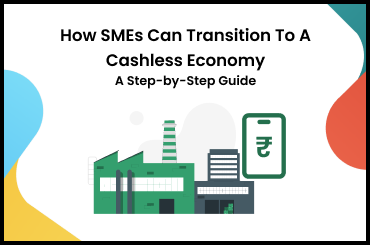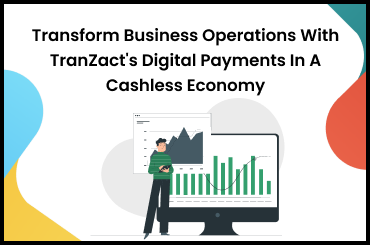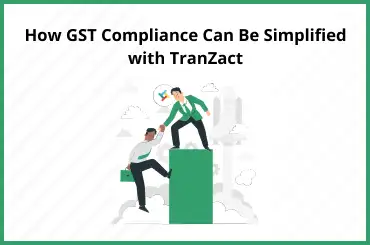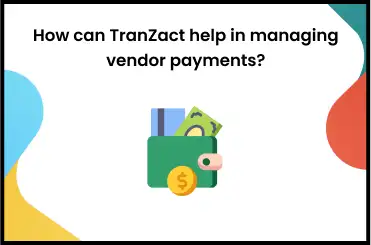The cashless economy in India is expanding with every passing day. When you are planning to transition to digital payment systems, you may face difficulties at different levels. Challenges of cashless economy for SMEs may include increased transaction costs, installation costs, dependency on internet connectivity, data security, compatibility with existing systems, and more.
Manufacturing businesses also avoid the transition to a cashless economy due to a lack of financial knowledge and trust.
In this blog post, we will understand the need for a cashless economy, best practices, and a step-by-step guide to smoothly transition your manufacturing business into a cashless economy.
Understanding The Need For A Cashless Economy
A cashless economy is a system where cash payments are replaced with digital transactions. SME businesses using a cashless economy, make and receive payments through debit cards, credit cards, UPI, cryptocurrencies, and more. In India, the need of cashless economy is rapidly growing to offer easy transactions and meet government compliances.
A MeitY report says that since 11 December 2023 in FY 23-24, India has crossed 116 billion digital transactions.
Indian manufacturing businesses need cashless transactions to make sure their operations stay transparent. When you move to the Indian cashless economy, it also helps prevent fraud, gives 24/7 access to your money, and improves convenience. The benefits of cashless economy in your manufacturing business also include better tracking and maintaining of transaction records and meeting GST compliance. Thus, cashless transactions help you prevent robberies by keeping your money digital and secure.
Learn more about the importance and benefits of Cashless economy in India.
Challenges Faced By SMEs In Transitioning To A Cashless Economy
While transitioning to a cashless economy, Indian SMEs face several challenges, including a lack of trust and knowledge of online transactions. Here are some common challenges you may face in the process.
- Infrastructure Costs: Many businesses avoid implementing cashless payments for SMEs due to the one-time installation costs.
- Payment Failure: Poor internet connection, either due to bad weather or technical issues, may lead to connection timeouts and transaction failures.
- Client Convenience: Your clients or distributors might not prefer cashless payment due to fear of information leaks and online fraud, which is not true.
- Training Requirements: You need to train staff to properly use digital payment systems, which can be time-consuming and expensive.
- Technical Support: You need to hire a technical team to create cashless infrastructure and maintain digital payment systems.
Benefits Of A Cashless Economy For SMEs
The benefits of cashless economy for Indian businesses include faster money transfers, access to financial schemes, and much more. Moving to cashless payment methods can benefit you in multiple ways, along with the following:
- Reduced Fraud: Cashless transactions are conducted digitally. This creates a record for each payment. This traceability reduces the risk of theft, counterfeit currency, and other cash-related fraud, providing greater financial security for businesses.
- Increased Security: Digital payments remove the risks associated with handling physical cash. Every transaction is securely recorded, reducing the chances of loss or theft, and making sure that your business's cash flow is accurately tracked.
- Easier Accounting: Digital transactions are automatically recorded and categorized. This reduces manual bookkeeping errors and makes it easier to manage your finances, generate reports, and comply with tax regulations.
- Higher Convenience: You no longer need to carry or manage physical cash. This reduces the risk of loss and makes transactions faster and more convenient for both you and your customers.
- Improved Cash Management: Digital transactions make it easier to monitor income and expenses. This can lead to cost savings by reducing the need for cash handling, storage, and transportation, and by minimizing the administrative load associated with cash management.
Choosing The Right Digital Payment Platforms
A reliable online payment platform is important when you are transitioning from a traditional manufacturing business to a cashless economy. It helps you save time, automate manual data entry, and increase the transparency and security of your day-to-day business transactions. The right digital payment platforms also allow you easy reconciliation and offer convenience to your client to clear invoices on time.
Overview Of Digital Payment Platforms Suitable For SMEs
Digital payment platforms offer easy money transfers to Indian SMEs while helping them with regular security updates and payment reminders. Cashless payment solutions help you receive payments through multiple methods, such as debit/credit cards, UPI, IMPS, NEFT, and mobile wallets.
It also offers certain features like a centralized dashboard, scheduled payments, and the ability to check the transaction history with just a click.
Popular Digital Payment Platforms For SMEs
An easy-to-use and reliable digital payments solutions for SMEs can improve your transactions and cash flow analysis. Here are the most popular cashless payments for SME.
- Google Pay: It is a unified payment interface that offers QR payments, account transfers, merchant payments, and more with increased security and zero transaction fees.
- Paytm: Paytm offers all-in-one QR codes, soundbox, POS hardware, POS billing software, and more.
- PhonePe: PhonePe offers dynamic QR, auto-pay, quick checkout, easy integrations, higher security, and more to manage large-scale transactions.
- Razorpay: Razorpay offers a full-stack payment solution with features like payment gateway, payment links, subscription billing, and automatic payment routing. It supports multiple payment modes, including credit/debit cards, UPI, and wallets, making it ideal for businesses of all sizes.
- BharatPe: BharatPe is specifically designed for Indian merchants and SMEs, offering zero-fee QR code payments, merchant loans, and integrations with accounting software. It also provides a merchant account with 0% transaction fees, making it a cost-effective option for small businesses.
- Instamojo: Instamojo provides a payment gateway, online store setup, and invoicing solutions tailored for SMEs. It offers easy integrations with websites and apps and supports various payment modes including UPI, credit/debit cards, and wallets.
- MobiKwik: MobiKwik is a mobile wallet that also offers a payment gateway solution for businesses. It supports UPI payments, card payments, and wallet-to-wallet transfers, making it a versatile tool for both online and offline merchants.
- CCAvenue: CCAvenue is one of India's largest payment gateways, offering a wide range of payment options, including cards, net banking, and wallets. It provides a multilingual payment page, making it suitable for businesses targeting a diverse customer base.
- Cashfree: Cashfree offers bulk payment, tracking, and automatic reconciliation options with a large number of payment modes.
- AePS: Aadhar Enable Payment System is a government-formed cashless payment mode. It offers higher security, biometric logins, financial inclusions, Aadhar-to-Aadhar fund transfers, and more.
Factors To Consider When Selecting A Platform
When selecting the right digital payment platform, you must consider the size of your business, cashless transaction goals, data security, and more. Here are some more factors:
- Ease Of Use: The payment platform should be mobile-friendly, easy to use, and require no technical skills.
- Cost: It should have a low or no transaction fee; otherwise, it can add up over time and harm your profits.
- System Integration: It should easily be integrated with Tally or other accounting software that you use for data updates.
- Data Protection: It should provide secure transactions while keeping your clients or distributors’ data safe.
- Fraud Detection: It must immediately notify you of fraudulent transactions to prevent your financial loss.
- Reputation: It must have positive user reviews related to transactions, data security, user experience, customer support, and more.
Implementing Cashless Payment Solutions
By now, you must have a fair understanding of the digital and cashless economy and payment platforms and what to look for when choosing one. You must select a payment processor that is compliant with PCI (Payment Card Industry). Here are the various cashless options and steps to implement cashless payment methods in your manufacturing business.
1. Different Cashless Payment Methods
You should look for cashless payment options that allow you to accept and release payment at your manufacturing business in different ways.
- Credit/Debit Cards: It is widely used all over India and a Business Standard report says that 75% of online transactions are still made through debit and credit cards.
- Mobile Wallets: People use it due to convenience and faster transaction speed. It is a way to store credits and gift cards and make online payments easily.
- Online Banking: IMPS and NEFT are two easy ways to transfer higher amounts and schedule multiple transactions at a time.
- UPI: It is a handy way of making online payments in India. According to the EPC (European Payment Council), around 350 million people use UPI for their day-to-day transactions.
2. Steps To Implement Cashless Payment Solutions In Your Business
Here is a simple process for implementing cashless payment solutions in your SME manufacturing business.
- Setting Up Infrastructure: Install POS terminals in your business outlets to receive payments through QR codes, UPI, card swipes, and more. Make sure that you have a stable internet connection to prevent transaction downtime and payment failures.
- Integrating Payment Gateways: Choose convenient cashless payment options with better security features and a higher successful transaction rate ranging from at least 74% to 85%. After that, integrate the payment gateway with your business’s website, app, portal, and accounting software, and check if it works properly.
- Training Staff On New Systems: Train your salespersons and accounting staff to easily receive payments using POS terminals and mobile devices. You can provide them with tutorial videos, step-by-step guides, and live training from time to time.
Training Staff For Cashless Transactions
At most SMEs, workers or staff are not very educated, and they usually don’t have much idea of how to operate digital devices and payment systems. To make sure you receive cashless payments from clients without error, you must provide practical training to your employees. It will help you automate cashless transactions and offer the best experience to your buyers.
Importance Of Staff Training In A Cashless Economy
Training your staff to use digital payment platforms can help you improve your money transactions, business operations, and security. Effective training also helps your staff understand digital payment systems, offer better client experience, and fix minor technical issues.
Developing A Comprehensive Training Program
The training program for your key staff members should be simple. Once your cashless payment systems are up and running, you should provide step-by-step tutorials to your employees. You can also give them live usage sessions to process payments effectively. Whenever a new update comes, remember to provide the necessary information to the staff to avoid any payment issues. Always remember to keep collecting feedback regularly to help them through the process.
Ensuring Security In Digital Payments
Security is one of the most important parts of digital payments to prevent data breaches and cyber-attacks. For this, you should choose a platform that has strong encryption protocols like SSL or TLS. Following best practices and cybersecurity measures helps you avoid financial losses and maintain security in daily transactions.
Best Practices For Securing Digital Transactions
Authorized access control and platforms with better encryption make digital transactions safe. Here are some best practices for securing your cashless transactions.
- Choose a reliable payment system.
- Avoid sharing card details
- Keep a strong transaction password
- Monitor your transactions for fraud
- Immediate report wrong transaction
- Verify every transaction detail
- Keep your system updated
- Educate key members about security measures
Implementing Robust Cybersecurity Measures
Taking regular data backup, training your staff to follow the best practices, and monitoring the payment activities keep your transactions and client data secure. Here are the best cybersecurity measures you can apply to prevent access to cyber criminals, fraudulent transactions, and data breaches at your manufacturing business.
- Regularly update your cashless payment systems
- Use biometric authentication
- Secure your system with firewalls
- Monitor systems for unauthorized access
- Use MFA (Multi-Factor Authentication)
- Use platforms with fraud detection features
- Make a plan for immediate recovery for any loss
Regularly Updating Systems And Training Staff On Security Protocols
Regularly updating your cashless payment systems helps you identify possible threats. It helps prevent any fraud and improve transactions with clients. You can keep the systems on automated update settings and let it update whenever a new patch comes. It will help you prevent system failure, minimize downtime, and meet industry compliance.
You must train your employees and workers on topics like password security, anti-phishing techniques, scam detection, and more. This will help them follow best practices to minimize human error, implement security measures, and smoothen the payment process.
Simplify Your Cashless Transition With TranZact
You must have understood the importance and features of cashless economy, digital payment systems, best practices, and cybersecurity measures by now. From chemical industries to automobile, mechanical, textiles, foods and beverages, renewal energy, and steel manufacturers, all are adopting a cashless economy to ease their payment process and simplify their record keeping.
Transitioning to digital payment methods helps you improve cash flow by lowering theft, minimizing paperwork, and speeding up the audit process.
Learn Transform Business Operations with TranZact's Digital Payments in a Cashless Economy
TranZact offers an effective payment module to improve your day-to-day business transactions. Made especially for Indian SMEs, it allows you to automate payment logging and automates payment reminders. With TranZact, you can automate invoice creation, maintain a record of payment history at a place, and easily meet GST compliance.
Choose TranZact now for an easy, cashless transition and business growth in just 14 days.
FAQs
1. What are the main benefits of transitioning to a cashless economy for SMEs?
The main benefits of transitioning to a cashless economy for SMEs are:
- Reduced fraud
- Increased transaction security
- Easier bookkeeping
- Higher convenience
- Prevented robberies
- Faster cross-border transactions
2. What steps should SMEs take to implement cashless payment methods?
The steps an SME should take to implement cashless payment methods are setting up the right infrastructure, integrating reliable payment gateways, and providing consistent training to their staff.
3. How can SMEs ensure the security of digital payments?
SMEs can improve the security of their digital transactions by following the best practices and the following cybersecurity measures at their business:
- Choose only reputed digital payment gateways
- Regularly update your systems
- Use a secure internet connection
- Use biometric authentication
- Train employees about safe usage
- Take immediate action for suspicious activities.
4. What challenges might SMEs face when transitioning to a cashless economy, and how can they overcome them?
While transitioning to a cashless economy, SMEs may face challenges like clients’ lack of trust, poor internet connectivity, and lack of proper digital systems. Choosing a secured cashless transaction solution, encouraging clients to pay online, and applying cybersecurity measures can help overcome these challenges.
5. How can SMEs choose the right digital payment platform?
An SME can choose the right digital payment platform by considering the following factors:
- Ease of use
- Low transaction fee
- Multiple payment methods
- Integration with existing systems
- Easy reporting
- Fraud detection policy
- Security featuresReputation and reviews














